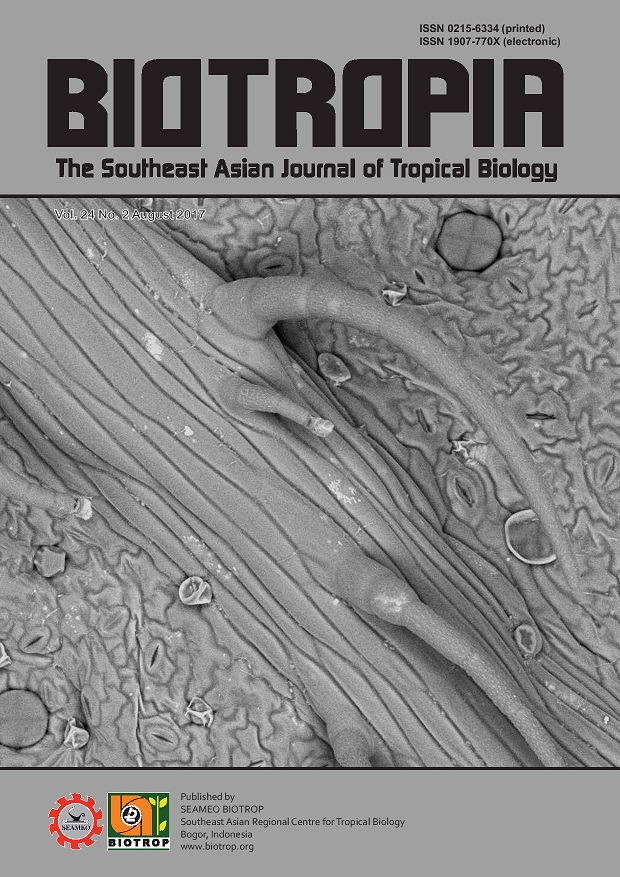
Tags
GENETIC VARIATIONS AMONG AQUILARIA SPECIES AND GYRINOPS VERSTEEGII USING AMPLIFIED FRAGMENT LENGTH POLYMORPHISM MARKERS
Content Language : English

Aquilaria sp. (Thymelaeaceae) is the most valuable non wood production of forestry plant
in Indonesia. It produces a fragrant resin when subjected to fungal attack and has been traded
internationally known as gaharu. Knowledge of genetic diversity and relationship among
species and genus is important for breeding purposes and species conservation. In this study,
genetic variability of six Aquilaria species were analyzed using the AmplifiedFragment Length
Polymorphism (AFLP) markers. Ten AFLP primer combinations amplified 1353 DNA
fragments ranging in size from100 to 350 bp of which 1285 (95%) of them were polymorphic.
Genetic similarities among Aquilaria sp. consisted of A. malaccensis, A. beccariana, A. microcarpa,
and A. crassna ranged from 63.90 to 72.00 % based on Dice coefficient. The dendrogram
derived by the unweighted pair group method with arithmetic mean of germplasm analysis
were clustered into two main groups. Hence, a genetic variation among species is quiet high.
Bootstrap values for the groups supported 70% of the cluster using a linear relationship
equation of (r = 0.724, P < 0.0001) was observedbetween known pedigrees and AFLP-derived
genetic similarity for 136 pairwise comparisons of Aquilaria species. For example, A. malacensis
and A. microcarpa have the highest genetic similarity (72.00%) compared with another Aquilaria
species. Primer pairs E-ACG/M-CTA produced a specific fragment for A. beccariana (850 bp),
A. crasna (550 bp, 180 bp, and 140 bp), A. malaccencis (1500 bp), A. microcarpa (250 bp) and
Gyrinops versteegii (150 bp). Primer pairs E-ACG/M-CAA produced a specific DNA fragment
only for A. beccariana (1500 bp and 100 bp). Primer pairs E-ACC/M-CAC also produced only
specific fragment for A. crassna (1500 bp). Study showed the usefulness of AFLP analysis in
Aquilaria sp. and its potential application for breeding and species conservation. Further,
molecular diversity estimated in the present study combined with the datasets on other
morphological/agronomic traits will be useful for selecting the appropriate accessions for plant
improvement through conventional and molecular breeding approaches.
Key words: Gaharu, Aquilaria sp., Gyrinops sp., genetic diversity, molecular marker, amplified
fragment length polymorphism (AFLP)
Link

This work is licensed under a Creative Commons Attribution-NonCommercial-NoDerivatives 4.0 International License.
